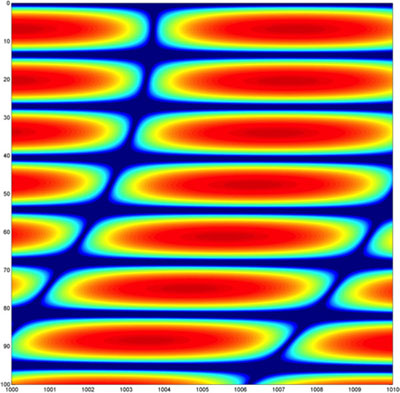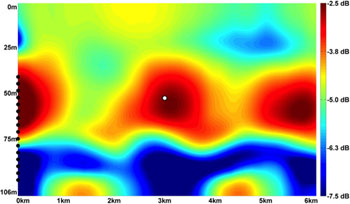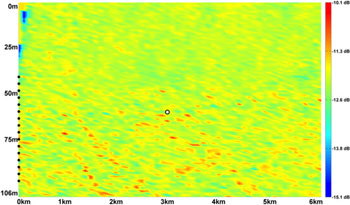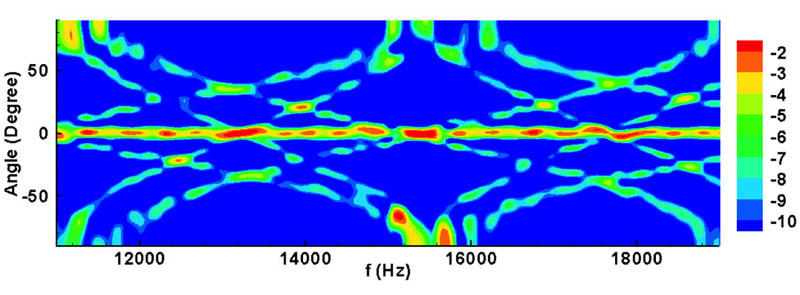Research: Nonlinear Techniques for Remote Sensing

Sponsor: Office of Naval Research
Once a time-domain signal has been recorded, it can be Fourier analyzed to determine its complex amplitude as a function of temporal frequency. The goal of this project is to determine how quadratic (nonlinear) products of the signal amplitude at different frequencies can be used to deduce information about the acoustic environment or remote acoustic sources or scatterers at frequencies outside the signal bandwidth. To date, such nonlinear approaches have been found to be successful in some circumstances for beamforming and for remote source localization.
References:
Abadi, Song & Dowling, JASA 132, 3018-3029 [2012].
Worthmann, Song & Dowling, JASA 138, 3549-3562 [2015].
Worthmann, Song & Dowling, JASA 141, 4579-4590 [2017].
Douglass, Song & Dowling, JASA 142, 1663-1673 [2017].
Lipa, Worthmann & Dowling, JASA 143, 2419-2427 [2018].
Abadi et al., JASA 144, 198-209 [2018].
Dowling, Phys. Rev. Fluids 3, 110506 (17 pages) [2018].
Geroski & Dowling, JASA 146, in press [2019].
Douglass & Dowling, JASA 146, in press [2019].



Current Research Projects
1. Predictions of Acoustic Uncertainty
2. Blind Deconvolution in Reverberant Environments
3. Nonlinear Techniques for Remote Sensing
4. Acoustic Diagnostics for Reverberant Environments
Recent Research Projects
5. Acoustic Coherent Backscatter Enhancement
6. Simulations of Washing Machine Processes
7. Turbulent Boundary Layers At High Reynolds Number
8. Multi-dimensional Measurements of Velocity during Thermoplastic Injection Molding
9. Beyond Line-of-sight Acoustic Sensing
10. Measurements of Oil-film Thickness